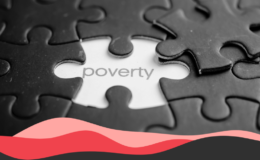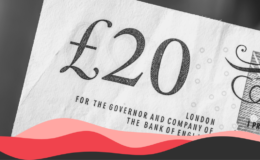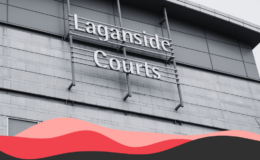- Following the collapse of plans to build a single national stadium on the site of the former Maze/Long Kesh prison, the NI Executive agreed to support redevelopment of stadiums for football, GAA and rugby, individually.
- This was never agreed as a financial “equal split” between three sports or three sporting associations. From the start, estimated costs for development varied significantly.
- It is worth noting that the projected spend for redeveloping Casement Park is now much higher than when the allocation was first agreed.
On 10 November in a post on social media, Loyalist campaigner Jamie Bryson claimed:
“[The construction of the three stadiums – at Ravenhill, Windsor and Casement] was agreed as an equal split between three sports.”
From a financial perspective, this is inaccurate.
At the time when the Executive agreed to help pay for new stadiums for the three sporting associations, the allocation was:
- £61.4 million to Ulster GAA for Casement Park
- £25.2 million to the IFA for Windsor Park
- £14.7 million to Ulster Rugby for Ravenhill
There are some complicating factors. Firstly, Windsor Park was not the only football (soccer) stadium set to receive money from this agreement. A commitment was also made to Irish League clubs Glentoran and Crusaders for £36m to refurbish their grounds.
That means the total support for the IFA was around the same as the commitment made to Ulster GAA. However, that is arguably not comparing like with like any more – and it still does not amount to an equal three-way split, given the smaller sum handed to Ulster Rugby.
It’s also worth noting that, given the delays that mean work is still yet to begin, the estimated costs of redeveloping Casement Park are now much higher than they were in 2011.
- The Maze/Long Kesh
The story of efforts to develop stadiums for football, GAA and rugby starts with the decision, made in 2006 under Direct Rule, to construct a single stadium at the site of the former Maze/Long Kesh prison.
The following year, it was confirmed that the three relevant governing bodies – Ulster GAA, the Irish Football Association (IFA) and Ulster Rugby – had agreed they would play there.
However, by 2008 with devolution at Stormont up and running, the DUP came out against the plan, arguing that the costs did not add up. Many unionists objected to plans for a peace-building and conflict resolution centre on the site and, at the same time, football (soccer) fans voiced opposition to any move away from Windsor Park.
The delay (and ultimately U-turn) meant that the offer to host some soccer matches at the 2012 Olympics in Northern Ireland could not be accepted.
- Three-way split
The Maze/Long Kesh site had been foreseen as a centrepiece stadium serving football, GAA and rugby. After that idea was quashed, news plans centred on development on separate sites for each of the three sporting bodies.
An agreement was reached in 2011, which stated that the associations would receive money as follows:
- £61.4 million to Ulster GAA for Casement Park
- £25.2 million to the IFA for Windsor Park
- £14.7 million to Ulster Rugby for Ravenhill
This comes to £101.3m of Executive money, although the total investment for regional stadia was actually placed at £110m. The remaining money was for any overspend.
Funding of around £36m was also agreed to support sub-regional soccer stadiums, directed towards the Oval/Glentoran and Seaview/Crusaders grounds, bringing the total for soccer up to roughly match the £62.5 million available for Casement Park.
- Implementation
The upgrade to Ravenhill was completed in 2014. The refurbishment of Windsor Park began in 2015 and was completed in time for the 2021 Super Cup.
However, while each redevelopment was subject to some form of legal challenge, Casement Park faced the most significant delays and has still not commenced. At the time of publishing this fact check, planning permission has been granted but a new contractor must now be found to build the stadium.
Seaview has been upgraded; however, the Oval still has not.
- Financial equality
From the context, it appears that Mr Bryson’s claim about an “equal split” refers to the financial allocations each sporting association would receive to help with stadium redevelopment.
His post is in reply to another post arguing in favour of the Casement Park rebuild, which itself quotes an article from the Irish News where former Northern Ireland football (soccer) player David Healy says the plans are not financially worth it.
In that sense, Mr Bryson is inaccurate. The initial agreement was not an equal split. The GAA was always set to receive more money for its tentpole stadium than the IFA was for its.
It could be argued that once the money for the Oval and Seaview is factored in, the GAA and IFA were set to receive similar amounts of cash overall. On the other hand, that is less of a like-for-like comparison and still ignores Ulster Rugby’s smaller allocation which meant that the initial agreement was never an equal split.
It should be noted that current estimates for the redevelopment of Casement Park are perhaps more than double the costs projected at the start – while another complicating factor is Casement Park’s possible use for football (soccer) matches, suggested as part of the wider UK and Ireland bid to host Euro 2028.
- Postscript – what does ‘equal’ even mean?
Context is all important in fact checking. Is there more to be compared than simple numbers and budgets? How should equality be measured? And how is equity achieved?
Costs for Casement Park now look much higher than they did 12 years ago – but GAA fans might argue that’s not their fault, or the fault of the GAA itself.
Arguably one stadium for football, one for rugby, and one for GAA amounts to equality (notwithstanding the development of sub-regional stadiums at the Oval and Seaview). But is this true equity?
Football (soccer) fans could point to participation numbers and say that, because of their sports popularity, they should deserve greater investment.
Rugby fans could take the opposite approach, and say that participation numbers only say so much – does anyone think ten-pin bowling is more popular, or has more cultural caché, than chasing a golf ball around a fairway? FactCheckNI will leave that as an exercise for our readers who may want to take into account the number of spectators at the Kingspan Stadium (formerly known as Ravenhill).
The GAA could say it represents not one sport, but six!
And, of course, so many other sports played in Northern Ireland – hockey, athletics, cricket, golf, tennis, road racing, and on and on – may be aggrieved at their zero allocation from this round of funding (zero pounds, zero pence) and ask what’s so equal about that?




